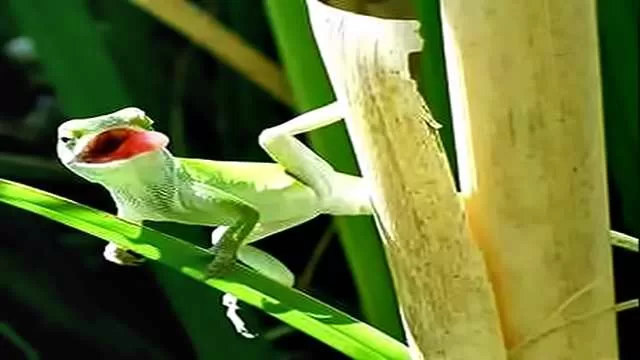In the lush landscapes of Florida, researchers are uncovering remarkable stories of evolution in real-time. A recent study has revealed astounding adaptations in the native Green Anole lizard (Anolis carolinensis) following the introduction of an invasive lizard species from Cuba, the Brown Anole (Anolis sagrei).
This fascinating case of ecological interaction highlights the resilience of native species and the dynamic nature of evolution. In this article, we will explore the findings of this research, the implications for biodiversity, and the ongoing battle between native and invasive species.
The Invasive Brown Anole
The Brown Anole, native to Cuba and the Bahamas, was first introduced to Florida in the 1880s. Since then, it has spread rapidly across the state, often outcompeting native species for resources. The Brown Anole is larger and more aggressive than the Green Anole, which has led to significant changes in the behavior and morphology of the native lizards.
Researchers have observed that the presence of the Brown Anole has forced Green Anoles to adapt in several ways. These adaptations include changes in their habitat preferences, feeding behaviors, and even physical characteristics. The competition for food and space has prompted the Green Anoles to become more arboreal, spending more time in trees and higher vegetation to avoid direct competition with the larger Brown Anoles.
Documenting Evolutionary Changes
A team of researchers from the University of Florida has been studying these adaptations closely. They have employed a combination of field observations and laboratory experiments to document the evolutionary changes occurring in Green Anoles. One of the most significant findings is that Green Anoles have developed longer limbs and increased agility, allowing them to navigate their arboreal habitats more effectively.
Additionally, the researchers have noted changes in the coloration of Green Anoles. In areas where Brown Anoles are prevalent, Green Anoles tend to exhibit darker coloration, which may help them blend into the shadows of trees and foliage, providing better camouflage from predators. This shift in coloration is a classic example of natural selection at work, as those individuals better suited to their environment are more likely to survive and reproduce.
Implications for Biodiversity
The ongoing adaptations of Green Anoles in response to the invasive Brown Anole raise important questions about biodiversity and ecosystem health. Invasive species can have profound effects on native populations, often leading to declines or even extinctions. However, the ability of Green Anoles to adapt demonstrates the resilience of native species in the face of ecological challenges.
This research also underscores the importance of understanding the mechanisms of evolution in real-time. By studying these adaptations, scientists can gain insights into how species respond to environmental pressures, which is crucial for conservation efforts. As climate change and habitat destruction continue to threaten biodiversity worldwide, understanding these adaptive processes can inform strategies to protect vulnerable species.
The Future of Green Anoles
As researchers continue to monitor the Green Anole populations, they are also exploring the long-term implications of these adaptations. Will the changes observed in Green Anoles lead to speciation, or will they continue to coexist with Brown Anoles in a competitive environment? The answers to these questions could provide valuable insights into the evolutionary processes that shape ecosystems.
Moreover, the findings from this research may have broader implications for other regions facing similar challenges with invasive species. By understanding how native species adapt to competition and environmental changes, conservationists can develop more effective management strategies to protect biodiversity.
Conclusion
The remarkable evolutionary adaptations of Green Anoles in Florida, driven by the introduction of the invasive Brown Anole, offer a compelling glimpse into the resilience of nature. As researchers document these changes, they not only contribute to our understanding of evolution but also highlight the importance of preserving biodiversity in the face of ecological challenges.
The story of the Green Anole serves as a reminder of the delicate balance within ecosystems and the ongoing struggle between native and invasive species. As we continue to study these fascinating lizards, we gain valuable knowledge that can help us protect and conserve the rich biodiversity of our planet.

